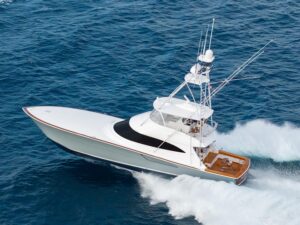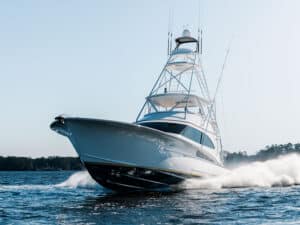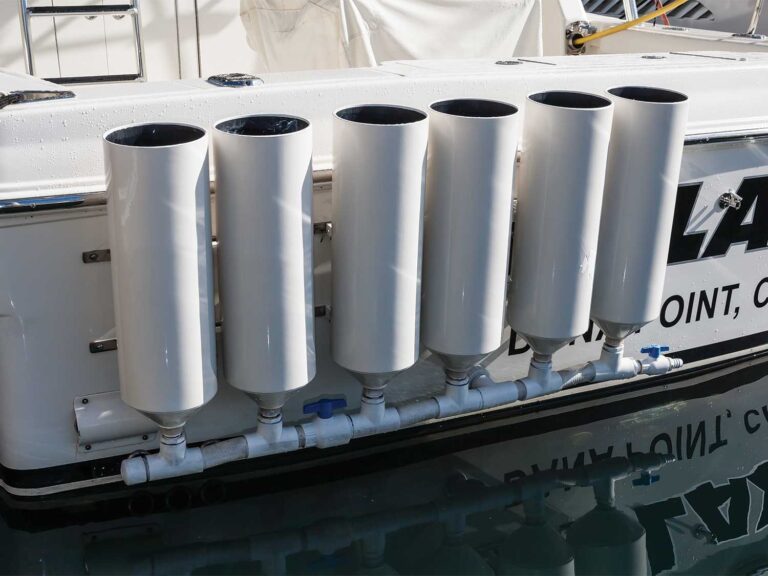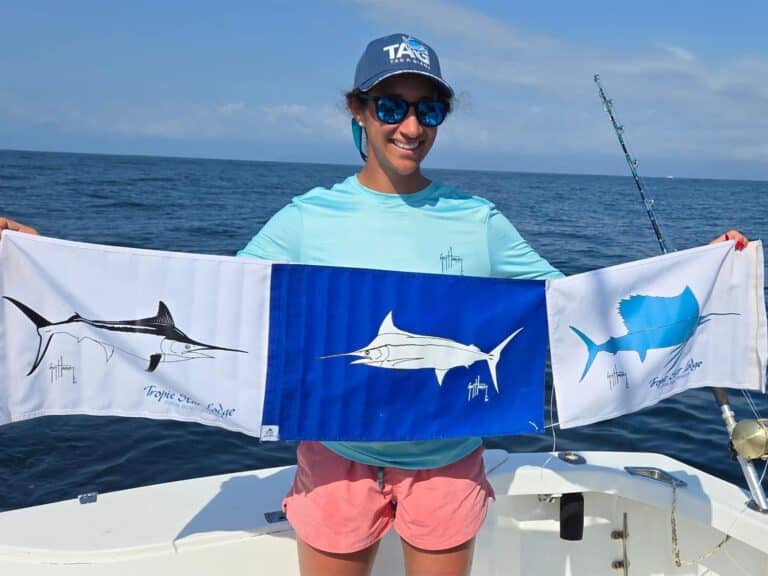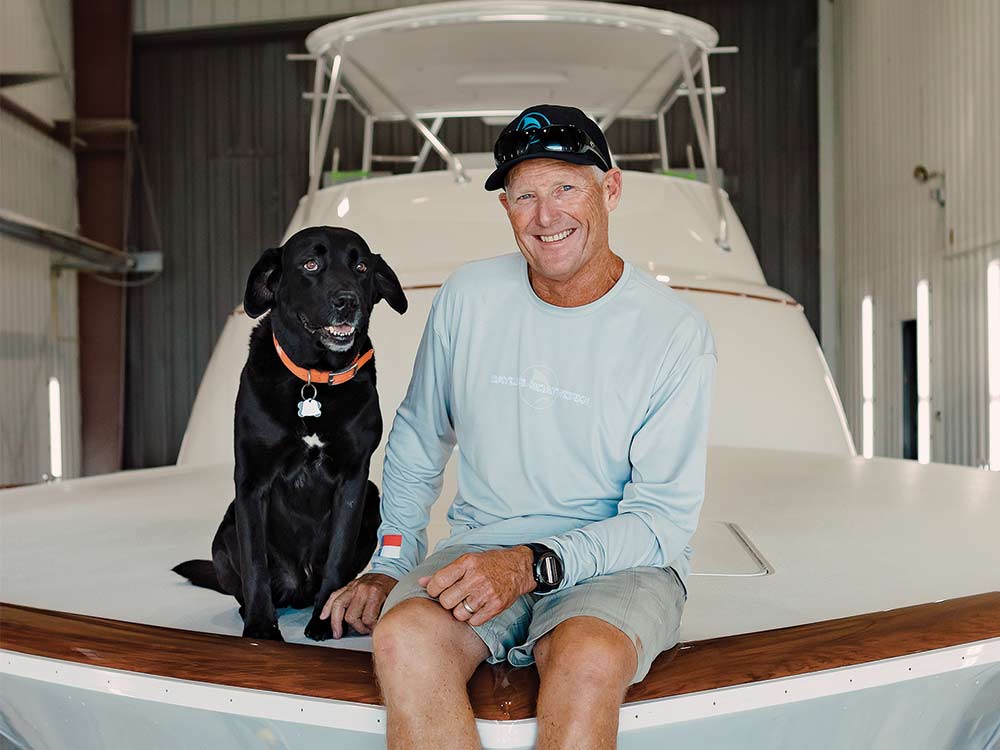
By way of a neighbor recommending North Carolina’s Outer Banks as a vacation destination to John Bayliss’ parents, a snowball that began as an annualssoatbuilder in Wanchese, North Carolina.
How did you make the transformation to fishing as a profession?
We lived in California, and as a kid, my dad used to take me out bottomfishing. That’s what started it all. On our first family trip to Cape Hatteras, we chartered a little boat for a half day and caught Spanish mackerel and bluefish, and I thought to myself, Somehow, I have to find a way to do this for a living.
We review the Bayliss 60 GameBoat, Mama C, here.
How did you make that happen?
We fished with Emory Dillon offshore when we’d vacation, and we caught sails and dolphin, tuna and wahoo, and I was just in love with it all. I told him that I’d like to try this, you know, being a mate. I didn’t know anything about fishing, other than I wanted to do it. Dillon called one day and said he was having problems with his current mate and asked if I’d be interested in working for him. He liked that I had such a desire to work hard and learn as much as I could about fishing.
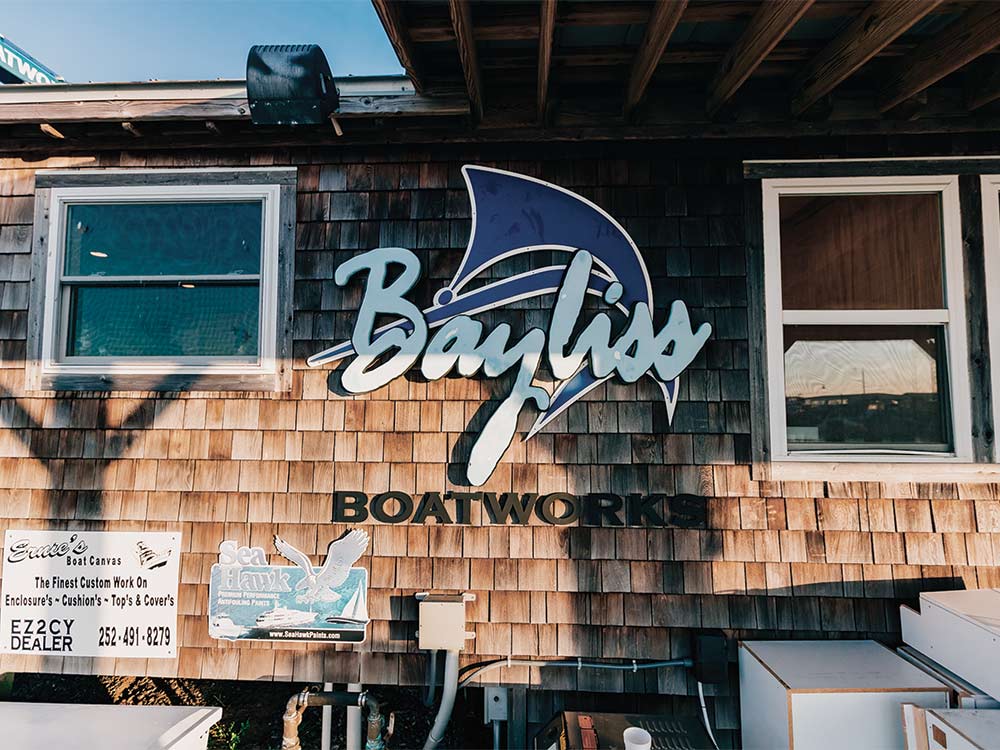
What was it like working in what many consider to be one of the most skilled charter fleets in the world?
Oregon Inlet is a great training ground for anyone who wants to work as a mate or captain. It’s extremely competitive, and such a diverse fishery. You might be bailing schoolie dolphin one day, and the next, you’re kite-fishing for tuna. And it’s a little marina where everybody backs in at the end of the day and there’s a crowd of people waiting to see a big catch or a rigger full of flags. The competition forces you to get good.
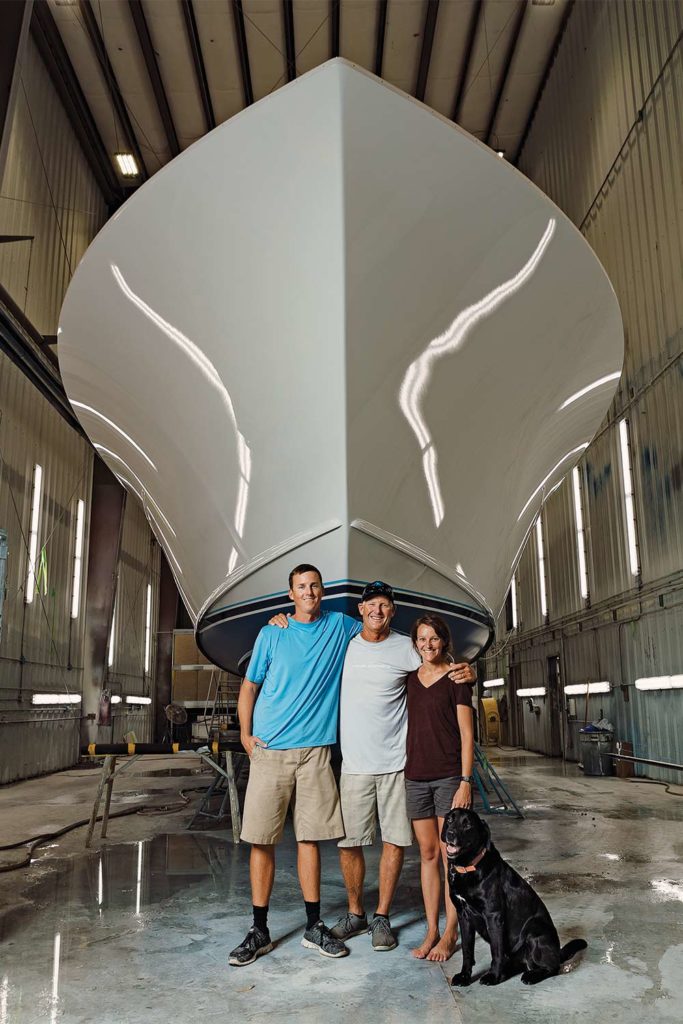
How did fishing lead you to building boats?
As an owner/operator, you can’t always afford to hire a mechanic, and you end up fixing a lot of stuff on the boat yourself. All the years of working on things on other people’s boats and I kept thinking, Gee, I wish they hadn’t put that air-conditioner pump in the corner, where it’s so hard to reach. You learn a lot about potential optimizations. The other good thing about Oregon Inlet is that it’s so tightknit that when someone has a problem, everybody tries to help. I eventually started asking a few people if there was any interest in building a boat, and three or four said yes right away. So in 2002, we drew up a couple of contracts, broke ground on a shop, and that’s how we started. I did not see it coming at all. But guys like Mark [Willis], Roy Merritt, Michael Rybovich, Paul [Spencer] and others were massively helpful, encouraging me to go forward with it.
So a fishing background makes a better builder in your eyes?
One hundred percent. I don’t see how we could be building what we are today. I’m just very thankful to have experience doing the stuff we expect our boats to do. It’s rough as hell in North Carolina in the winter, so even the commercial fishing helped in the development process. I think it’s almost mandatory to be a fisherman first and a builder second.
Who’s pushing you in the boatbuilding world?
The owners and crews are really the ones who are driving us these days. They deserve a lot of credit.
What’s a trend in the industry you dislike?
I cannot handle big egos. I’m not sure whether it’s a product of social media or not, but it seems like egomania is on the rise these days. Sport fishing is a privilege that so few get to experience, and it is unquestionably a team sport. I think there are people in the industry who tend to forget that.
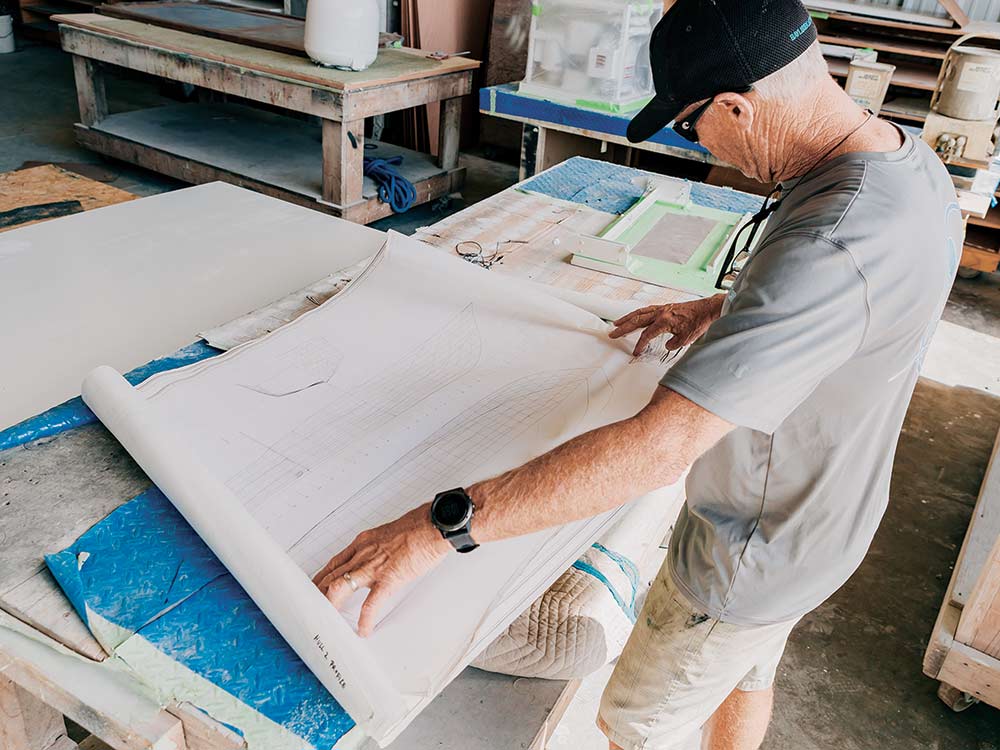
Tower or no tower?
That’s a tough question. I like both for different reasons. On the basis of looks: a tower.
What is something most people don’t know about you?
I have an incredible wife. She’s a really good person, and she makes me better in every way. She also keeps me eating healthy, but when I am fishing — and only when I’m fishing — a diet Coke and a small bag of Fritos on the bridge at 10 a.m. help me find some bites. I don’t know why, but it works. I guess you could say I’m taking one for the team.
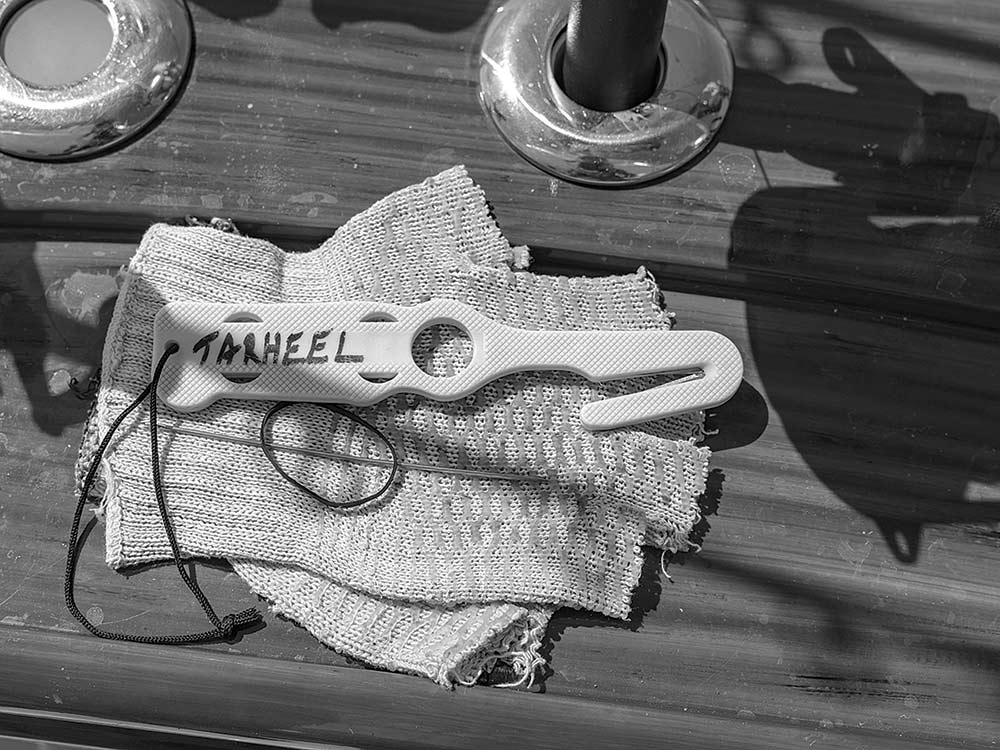
If you weren’t building boats, what would you be doing?
I’d most likely be commercial fishing or farming.
Your son John loves to build boats, but certainly a father’s dream is to have a son follow in his footsteps. Was he always interested in boatbuilding?
I think his interest in the boatbuilding side developed during his years at East Carolina University. He was fishing then with Arch [Bracher], and we talked about it a lot, but I only wanted him to get involved if he had an interest in it. I did not want to have a situation where it was just handed down to him, because that doesn’t build any respect with the guys he’d be working with. In addition to the actual build process, he has really excelled at the customer/co-worker interactions. Everybody likes him a lot more than they like me sometimes.
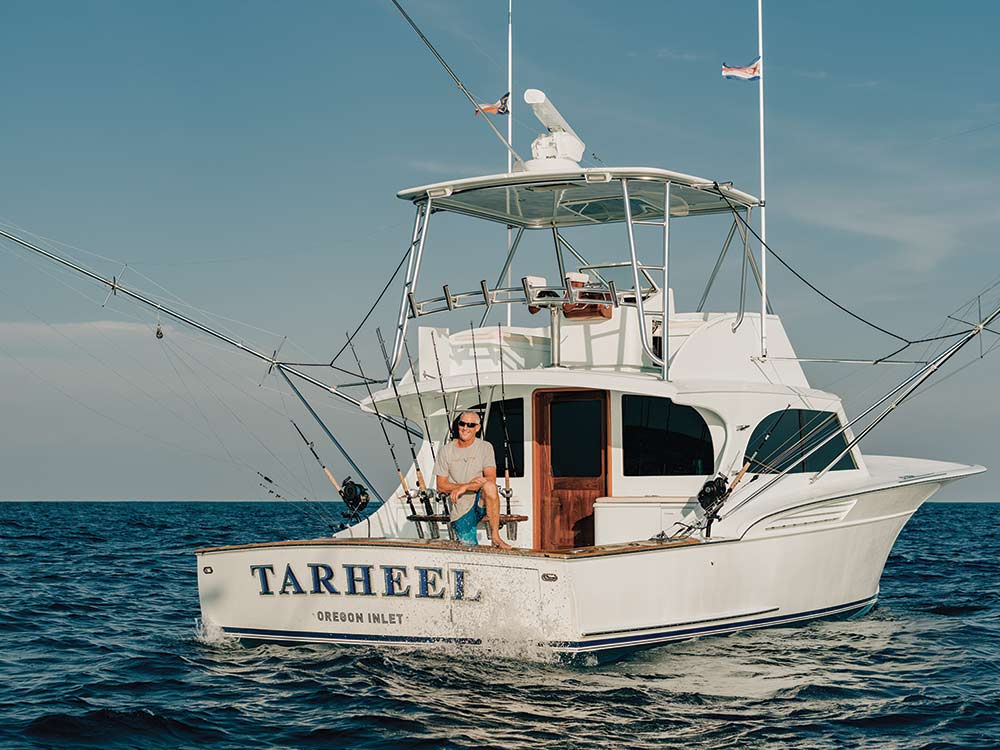
And now your daughter, Ladd, is handling the marketing for the company. Did you always envision Bayliss Boatworks as a family affair?
I had hoped for it, sure, but it was never planned that way. I didn’t want to push it on them. With John, I sort of saw it coming with his fishing background, but I figured Ladd wouldn’t be interested in it. She has done an incredible job with our marketing and social media efforts though. It’s cool because we’re all starting to sync up and think the same way, so they make my life a lot easier. I can actually go fishing from time to time.
What’s your best advice for the younger generation?
The same advice your mom and dad gave you: Do what you love first, and everything else will fall into place. The key with anything — particularly with boatbuilding — is that it’s tough sometimes. So that fundamental love for boats and fishing is important because it will carry you through all the adversity you will face along the way.
